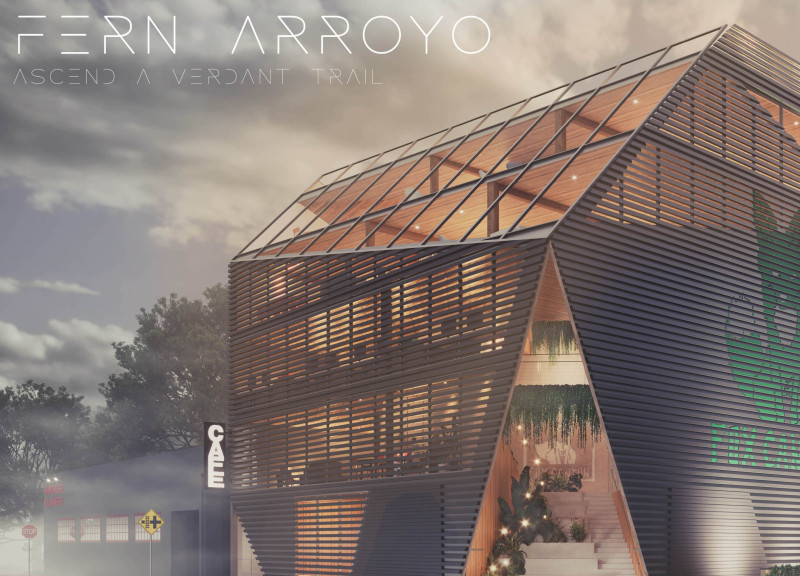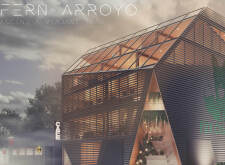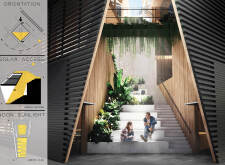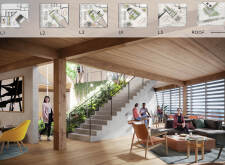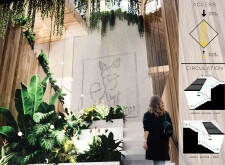5 key facts about this project
At its core, "Fern Arroyo" focuses on creating living and communal spaces that encourage social interaction while promoting individual moments of tranquility. The architectural design facilitates flexible use, which adapts to various activities, enhancing the overall user experience. It successfully amalgamates various zones, including areas for gathering, recreational pursuits, and opportunities for quiet reflection, intertwining functionality with accessibility.
A distinctive feature of the project is its materiality, characterized by a careful selection that aligns with both aesthetic and ecological considerations. Timber is utilized generously throughout the structure, providing warmth and a tactile connection to nature. The incorporation of concrete adds durability and contrast, establishing a visual dialogue between the organic and the manufactured. Large expanses of glass invite natural light into the interior spaces, blurring the boundaries between inside and outside, while fostering a sense of openness. This approach not only enhances the ambiance but also allows occupants to engage with the surrounding landscape, reinforcing the project's connection to its environment.
Unique design approaches have been employed to ensure that "Fern Arroyo" remains attuned to the principles of sustainable architecture. The project's orientation has been carefully considered to maximize solar exposure, reducing reliance on artificial lighting and heating. This passive design strategy illustrates an understanding of environmental impacts, allowing for energy-efficient living without compromising comfort. The incorporation of greenery as a fundamental aspect of the design fosters biodiversity, enhances air quality, and contributes to the overall well-being of occupants.
In terms of spatial organization, the layout of "Fern Arroyo" is both intuitive and thoughtfully constructed. The variety of spaces includes community-oriented areas that promote social gatherings and interactions among residents, as well as private nooks designed for solitude and relaxation. This duality effectively balances collective and individual needs, a critical aspect of contemporary residential design. The project's design outcome reflects a robust understanding of human behavior and the environmental context, resulting in a cohesive living environment.
Additionally, the landscaping plays a crucial role, serving not just as an aesthetic enhancement but as a functional element that supports the ecological system. The project emphasizes the importance of native plant species, which are not only more sustainable but also provide valuable habitats for local wildlife, thereby enriching the surrounding ecosystem.
To gain deeper insights into the architectural elements of "Fern Arroyo," readers are encouraged to explore the various architectural plans and sections that illustrate the spatial organization and design intentions. A closer examination of the architectural designs will reveal how thoughtful details shape the occupant experience and underline the project's overall vision.
"Fern Arroyo" stands as a testament to the potential of architecture to inspire and facilitate a meaningful connection between humans and their environment. It invites those interested in contemporary design to reflect on how such projects can respond to the demands of modern living while respecting the natural world. For more extensive examination and to uncover the numerous architectural ideas within this project, it is advisable to delve into the presentation of "Fern Arroyo" for a comprehensive understanding of its design philosophy and execution.


